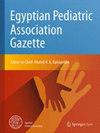用于急性心肌炎床旁诊断的球形指数
IF 0.5
Q4 PEDIATRICS
引用次数: 0
摘要
急性心肌炎(AMY)和扩张型心肌病(DCM)患者出现急性心力衰竭和收缩功能低下时,区分急性心肌炎和扩张型心肌病对及时启动抗炎治疗至关重要。使用心脏磁共振(CMR)或心内膜活检(EMB)作为金标准可能会受到限制,因为这很可能会影响血液动力学。球形度指数(SPI)测量的偏心心肌重塑可能有助于区分AMY和DCM,因为DCM的左心室横径会逐渐增大。我们研究的主要结果参数是检验 SPI 在区分 AMY 和 DCM 时的诊断准确性,次要结果参数是比较 SPI 和肌钙蛋白 I 在相同情况下的诊断准确性。为此,我们进行了一项回顾性研究,对本院因左心室运动减弱而收治的 60 名急性心力衰竭患者的病历进行了审查。经过 CMR 成像检查后,患者被分为两组:第一组为 AMY(30 人),第二组为 DCM(30 人)。从患者档案中收集了患者的人口统计学和临床特征,包括心率、机械通气需求、米力农、肾上腺素和去甲肾上腺素的使用、肌钙蛋白 I 和二维衍生球形指数。AMY患者对机械通气加压和血管加压的需求更高;73%的AMY患者需要机械通气和肾上腺素,而DCM患者的这一比例不到50%。与 DCM 患者相比,AMY 患者的肌钙蛋白 I 升高更明显(分别为 0.25 ± 0.04 和 0.21 ± 0.03)。与 AMY 病例相比,DCM 患者的 SPI 明显更高,这表明由于病变的慢性化,心肌因进行性重塑而呈球形结构。ROC 分析显示,SPI ≤ 0.38 对区分 DCM 和 AMY 的敏感度为 100%,而常用的肌钙蛋白 I 的敏感度仅为 53%。SPI 评估可作为护理点超声心动图检查的一部分,向急诊室(ER)医生和重症监护医生传授。本文章由计算机程序翻译,如有差异,请以英文原文为准。
Sphericity index for bedside diagnosis of acute myocarditis
Differentiating acute myocarditis (AMY) from dilated cardiomyopathy (DCM) in a patient presenting with acute heart failure and poor systolic function is of utmost importance to initiate timely anti-inflammatory treatment in AMY. Using cardiac magnetic resonance (CMR) or endomyocardial biopsies (EMB) as gold standards might be limited due to the likelihood of hemodynamic compromise. Eccentric myocardial remodeling as measured by sphericity index (SPI) might be useful in differentiating AMY from DCM, due to the progressive increase in transverse LV diameter in DCM. The primary outcome parameter of our study was to test the diagnostic accuracy of SPI in the differentiation of AMY from DCM, while the secondary outcome parameter was to compare the diagnostic accuracy of SPI to troponin I in the same context. For this purpose, we conducted a retrospective study involving a chart review of the files of sixty patients admitted with acute heart failure due to hypokinetic left ventricle in our hospital. Patients were divided after CMR imaging into two groups: group 1 with AMY (n = 30) and group 2 with DCM (n = 30). Demographic and clinical characteristics of the patients, including heart rate, need for mechanical ventilation, use of milrinone, epinephrine and norepinephrine, troponin I, and 2D-derived sphericity index, were collected from patients’ files. Patients with AMY had a higher need for mechanical ventilation inopressors and vasopressors; 73% of AMY patients required mechanical ventilation and epinephrine use, compared to less than 50% of DCM patients. Troponin I elevation was more marked in AMY compared to DCM patients (0.25 ± 0.04 vs. 0.21 ± 0.03, respectively). SPI was significantly higher in DCM compared to AMY cases, denoting a spherical configuration of the myocardium acquired due to progressive remodeling, because of the chronicity of the pathology. ROC analysis revealed that an SPI ≤ 0.38 was 100% sensitive in differentiating DCM from AMY, compared to a 53% sensitivity with the commonly used troponin I. AMY diagnosis can be achieved by the assessment of sphericity index rather than troponin I. The bedside nature and noninvasiveness of SPI should reshape the practice in this context. SPI assessment can be part of point-of-care echocardiography, taught to emergency room (ER) physicians and intensivists.
求助全文
通过发布文献求助,成功后即可免费获取论文全文。
去求助
来源期刊

Egyptian Pediatric Association Gazette
PEDIATRICS-
自引率
0.00%
发文量
32
审稿时长
9 weeks
期刊介绍:
The Gazette is the official journal of the Egyptian Pediatric Association. The main purpose of the Gazette is to provide a place for the publication of high-quality papers documenting recent advances and new developments in both pediatrics and pediatric surgery in clinical and experimental settings. An equally important purpose of the Gazette is to publish local and regional issues related to children and child care. The Gazette welcomes original papers, review articles, case reports and short communications as well as short technical reports. Papers submitted to the Gazette are peer-reviewed by a large review board. The Gazette also offers CME quizzes, credits for which can be claimed from either the EPA website or the EPA headquarters. Fields of interest: all aspects of pediatrics, pediatric surgery, child health and child care. The Gazette complies with the Uniform Requirements for Manuscripts submitted to biomedical journals as recommended by the International Committee of Medical Journal Editors (ICMJE).
 求助内容:
求助内容: 应助结果提醒方式:
应助结果提醒方式:


